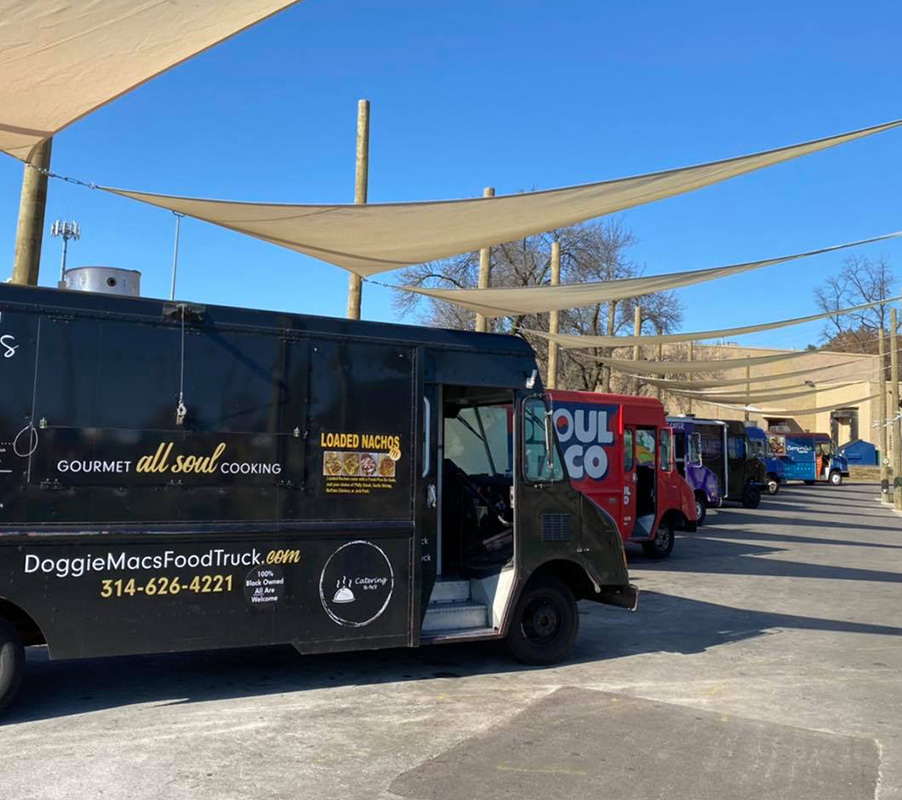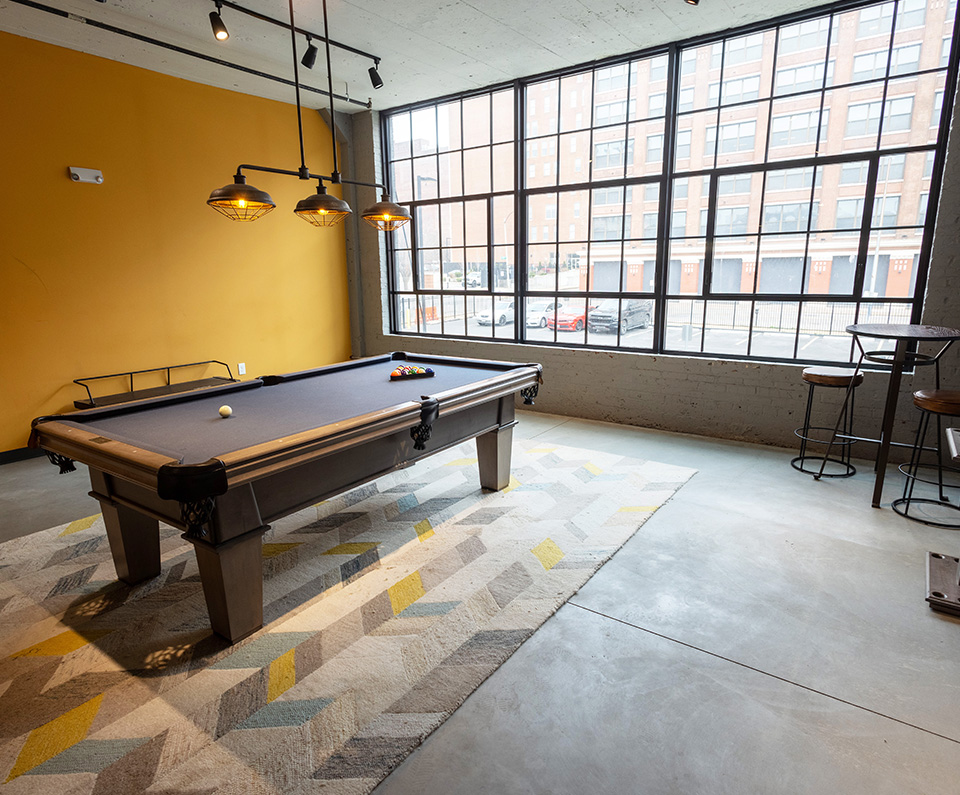
9 Mile Garden, a food truck garden being developed by Guerrilla Street Food co-founder Brian Hardesty and Seneca Commercial Real Estate, is adding an all-draft bar to anchor the project.
The Canteen will open within the food truck garden in spring 2020.
“9 Mile Garden is all about enjoying food, entertainment, and community in a family-friendly setting, and The Canteen is part of that vision,”Hardesty said in a statement. “The bar will feature large communal tables, a huge selection of free games to play, live music, and a large patio overlooking the ground at 9Mile Garden.”
The Canteen will offer a wide selection of draft beer from local and national breweries, as well as a rotating selection of draft wines, cocktails and cold brew by Blueprint Coffee. The 3,500-square-foot space will have 16-foot garage doors that retract to transform the space into an open-air bar. The space also can be reserved for private events for up to 200 people.
The planned food truck garden is to be located at 9375 Gravois Road in Affton Plaza, a retail center that is owned and operated by Larry Chapman’s Seneca Commercial Real Estate, officials said. Seneca and Hardesty expect the project to cost close to $1 million, officials told the Business Journal. The real estate company will serve as its own general contractor and will select different contractors for other components of the project, like site work and build out of the restrooms.
The entertainment district will feature a daily rotation of St. Louis-area food trucks for lunch and dinner service six days a week. A jumbo screen will show outdoor movies and live stream sporting events, officials said. A permanent stage will host local and national entertainers. There will be space for nine food trucks, plus room for two guest trucks for special occasions. There is no designated seating for patrons — but operators expect people to show up with their own folding chairs and blankets for different events.
The name “9 Mile” comes from “the days before streets had names or road markers, where landmarks were named for their distance from the courthouse or city center,” officials said. The food truck garden is located about 9 miles from St. Louis’ Old Courthouse downtown. In addition, there was a time when farmers drove their harvests to open spaces and lined up their trucks into a formation that allowed people to walk along and select items that interested them most. These were called “truck gardens,” officials said, and Affton was known for having a high number of them.
Hardesty launched the first Guerrilla Street food truck with hispartner
Joel Crespo
in 2011 after purchasing a former laundry vanfor $2,000 on Craigslist. The duo’s first restaurant came in 2015 at3559 Arsenal St. Today, Crespo and Hardesty own five restaurantlocations and continue to run their food truck.
Seneca Commercial Real Estate is a new company formed byChapman this year, officials said. Previously known as ChapmanVentures, the company redeveloped Affton Plaza and beganworking on ideas for phase two of the project — which turned into9 Mile Garden.
All this has fired my curiosity about social media. It is pretty easy to see the power that these platforms have and their ability to create perceptions, which can quickly become reality. When searching for information, the quicker it’s found, the better. It is amazing how easy it is to believe that even small companies are now large and important based on social media. With the right hashtag on peak trends and the right influencer mentions, it seems anything is possible — for good or ill. Results on social media can be both rapid and ruthless. And a bad impression can be very difficult to overcome.
This leads me to thinking about downtown St. Louis and St. Louisas a region. In particular, I thought about current, difficult issues such as crime, lack of growth and negative perceptions of our region generally. Simply typing in the words “St. Louis” into a search engine often yields negative content among top results, while finding good news and positive things about St. Louis takes time and effort.
It seems to me that efforts to promote St. Louis, whether it’sGreater St. Louis Inc. or the city itself, should go out of its way to hire a large team of the best and most talented social media marketers and content creators (local or not), to develop the most robust social media campaigns possible. Every effort should be made to engage online influencers and advocates to advance and promote the good stories about St. Louis — not so that we don’t have to face our problems, but so that the narrative isn’t unfairly dominated by them. I honestly think most of these promotion budgets should be focused on social media, along with other digital tools such as search engine optimization. As important, entities like GSL, Explore St. Louis, the city, county and others need to work in concert with each other and pool their efforts. St. Louis has a long history of business and booster groups running their own shows, which wastes limited resources and can blunt the positive impact we all want to achieve. The creation of GSL is to some extent a recognition of this fact, but there are still lots of other players. To succeed in a social campaign, as in so many other things, we need to set aside our parochial interests and collaborate and, perhaps most important, do things differently.
This is something every business and person that cares about St.Louis can and should help with.
If we can promote enough “good news” stories, it would result in outsiders and even ourselves becoming more upbeat and supportive of the St. Louis community and more confident in its future. This won’t happen overnight, but it can happen. By changing not just the perspective of others, but our own perspective about St. Louis, we can help shape our future for the better. We can be among the top of more fun “cool places to live”national lists, instead of all the lists we don’t want to be on.
It also seems like the best and brightest among us in this arena tend to be younger and ready to change, which is exactly what we need to revitalize and improve every aspect of St. Louis.
I have been a brick-and-mortar real estate developer for more than43 years, and personally believe I’ve done a lot of good for the community. But what’s next? How do we better leverage evolving technologies born from the internet to improve and benefit St.Louis?
Is social media a big part of that answer? I think so.
Credit:
Veneta Rizvic | Jan 13, 2020


